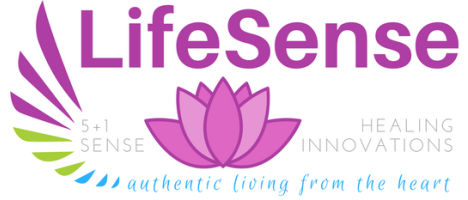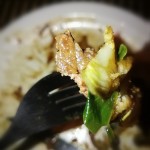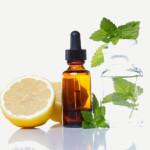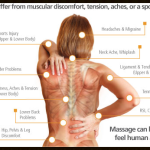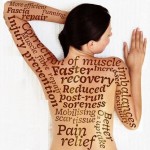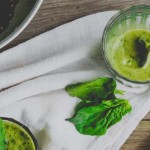Eat Clean and Lean
It has been proven that you cannot lose weight with exercising alone, as what you eat contributes immensely to your body’s capability to functional optimally when it comes to metabolically breaking down the food, chemicals, substances and toxins. Yes that’s right, much of what we eat in the Western developed world is filled with a bunch of hidden toxic substances – and since you are what you eat, you may want to start paying attention to exactly what you put into your body.
Cutting out toxic foods and sticking to a clean, natural, healthy diet are vital ingredients to eating clean and lean, enabling your body to naturally detox itself and re-balance its own internal systems and functions.
“a ‘clean’ body is one that can deal effectively with everyday toxins and get rid of them successfully. A body can never be lean unless it’s clean, and toxins stop that happening. That’s because your body stores toxins in its fat cells. If you’re dieting, but toxic, your body will slowly lose fat, but these toxins will have nowhere to go other than back into your system. The result? You’ll feel tired, you’ll have headaches and you’ll struggle with your energy levels. This is why most of us feel rotten within a few days of starting a diet. Your body decides that it doesn’t like feeling that way, so it holds on to fat in order to store the toxins. So if you’re toxic, you’ll always find it hard to lose weight.”
If you stick to ‘clean’ foods – meaning toxin-free foods that are unprocessed and close to their natural state – then you’ll lose weight easily and keep it off. So what are the clean foods that you should be eating? In a nutshell…
- They haven’t changed much from their natural state. For example, an orange in a bowl looks like an orange hanging on a tree, whereas a crisp looks nothing like a potato.
- They won’t need any added fake flavourings.
- They don’t last for months and months – clean foods will go off in the fridge or cupboard after a short while as they don’t contain preservatives.
- They don’t contain more than five or six ingredients.
- They don’t contain ingredients that you can’t pronounce or that you don’t recognize.
- They don’t list sugar as their main ingredient (or as one of their first three).
- They don’t make you feel bloated, gassy or too full.
 SAY NO TO TOXINS
SAY NO TO TOXINS
The four main toxins that cause our bodies to cling to fat are caffeine, refined sugar, alcohol and processed foods, and their initials spell c-r-a-p. So what I say is, ‘Cut the crap!’
CAFFEINE
This is OK in small doses. A cup of coffee a day won’t do you much harm, and some studies suggest that it can even help with fat burning. The same goes for tea. Green tea – which also contains caffeine – is an even better fat burner, and I let my clients drink up to six cups a day (not in the evening, though, as it can stop you sleeping). The trouble with caffeine is that too much of it causes stress to your body. And too much stress dumps a ring of fat around your middle.
REFINED SUGAR
Sugary foods raise your insulin level, which causes fat storage. Studies show that 40 per cent of the sugar you eat is converted straight to fat, and that’s in a slim person; if you’re already overweight, up to 60 per cent is converted straight to fat and stored around your stomach, waist and hips. If you eat sugar every day, you’ll always find it a struggle to lose weight and you’ll never have a flat tummy.Sugar also leaches vitamins from your body, and a body starved of vitamins becomes hungry. That’s why overweight people are always hungry – they don’t eat enough vitamin-rich food and are actually malnourished. Toxic foods such as sugar will never satisfy you or fill you up. Plus, sugar makes you tired, lowers libido and weakens the immune system.
Refined sugar is found in the white sugar you put in your tea, as well as the following:
- fruit drinks
- white, non-organic pasta, bread and rice
- alcohol
- cakes, sweets, biscuits, ice cream
- foods marketed as ‘low fat’, including cereal bars and energy drinks
- any ingredient ending in ‘ose’, such as sucrose, glucose, maltose, lactose, dextrose and fructose
- also avoid foods containing artificial sweeteners, such as saccharin and aspartame.
ALCOHOL
Alcohol is full of sugar, and as a result makes you fat around the middle. It stimulates the production of the hormone estrogen in your bloodstream, which promotes fat storage (specifically around your waist and tummy). In addition, the liver is a fat-burning organ, but when it’s busy processing alcohol it stops burning fat.
Alcohol also decreases muscle growth, leaving you podgy and out of shape. I see so many women with what I call a ‘wine waist’ – a thick waist and a swollen, squidgy tummy as a result of regularly drinking wine three or four days a week.
PROCESSED FOODS
These go against every clean and lean rule there is. The less a food has been altered, the ‘cleaner’ it is and the better for our health and waistlines. Clean foods are very close to – if not the same as – their natural state, whereas processed foods are far
from it. They are usually made in factories, stripped of their natural goodness and pumped full of man-made preservatives and additives to make them look appetizing and last longer.
Foods to avoid include:
- canned foods
- white bread, pasta and rice
- processed meats
- breakfast cereals
- frozen ready meals
- frozen fries, wedges, etc
- packets of dried pasta
- packaged cakes, biscuits, muffins
- chocolate, sweets and crisps.
LET YOUR DIGESTIVE SYSTEM DO THE WORK
If you want to lose weight around your stomach, it’s important that your digestive
system is functioning at its optimum ability, which is where probiotics and prebiotics come in. They work together to boost gut health and should be included in your diet, either by eating foods that contain them or by taking supplements. Unless your gut is as healthy as it can be, your stomach will always be fat.
Probiotics are live microorganisms, known as friendly bacteria, and are responsible for several important biological functions, including boosting your digestion, reducing levels of ‘bad’ gut bacteria and strengthening the immune system. They also help your body to absorb health-boosting nutrients from your food more efficiently. Prebiotics are non-digestible ingredients found in certain foods that stimulate the growth of friendly bacteria in the gut.
Probiotics are found in:
- sauerkraut
- miso
- fermented dairy products, such as acidophilus milk (make sure they’re low
in sugar) - natural yoghurt and yoghurt products (look for the words ‘live cultures added’ in the ingredients)
- some soft cheeses
- cultured buttermilk
- soured cream.
Prebiotics are found in:
- bananas
- berries
- asparagus
- garlic
- tomatoes
- onions
- spinach
- kale
- lentils
- kidney beans
- chickpeas
- black beans
- oats.
Vitamin C makes pro- and prebiotics more effective, so tuck into vitamin C-rich foods
every day, such as kiwi fruit, oranges, sweet potatoes, broccoli, brussels sprouts and tomatoes.
If you would prefer to take pro- and prebiotics in supplement form, ask your local
health-food store for recommendations.
A probiotic should contain several different strands of bacteria, including lactobacillus bulgaricus, lactobacillus acidophilus, streptococcus thermophilus and ifidobacterium.
Apart from helping you to achieve a flat tummy, the benefits of pro- and prebiotics include:
- lower ‘bad’ cholesterol levels
- increased vitamin absorption from your foods
- boosted immune system
- steady blood-sugar levels
- less constipation and diarrhea
- reduced risk of bowel disorders
- possible reduced risk of cancer.
